How to Grow Herbs Indoors: Tips for Fresh Seasonings Year-Round
Growing herbs indoors is a great way to bring some life into your kitchen and keep fresh flavors within reach. You don’t need a big setup or a lot of experience to get started. A sunny window, a few pots, and some good soil can go a long way.
Once you get the hang of it, you’ll think about why you didn’t start earlier. Whether you want to snip basil for pasta or mint for your tea, indoor herb gardens are handy and pretty fun to care for.
This post may contain affiliate links, which helps keep this content free. Please read our disclosure for more info.
Choosing the Best Herbs to Grow Indoors
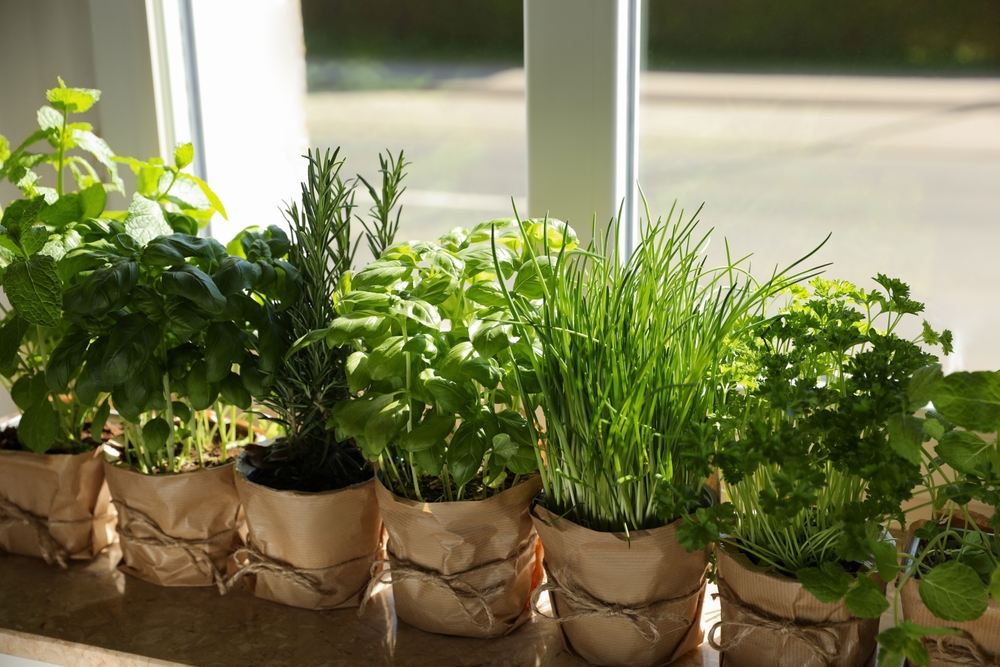
Some herbs are better suited to indoor growing than others. Basil, parsley, thyme, chives, mint, oregano, and rosemary all grow well in pots and don’t take up much room. They also bounce back nicely after you snip them for meals.
If you’re not sure which herbs to start with, think about what you cook the most.
- Basil and oregano for pasta sauces and pizza
- Mint for drinks or desserts
- Parsley and chives for soups and sides
There’s a difference between perennial herbs, which can keep going year after year, and annual ones that live for just one season. Rosemary and thyme are perennials. Basil and parsley are annuals, but you can keep them going longer with regular picking.
Picking the Right Location in Your Home
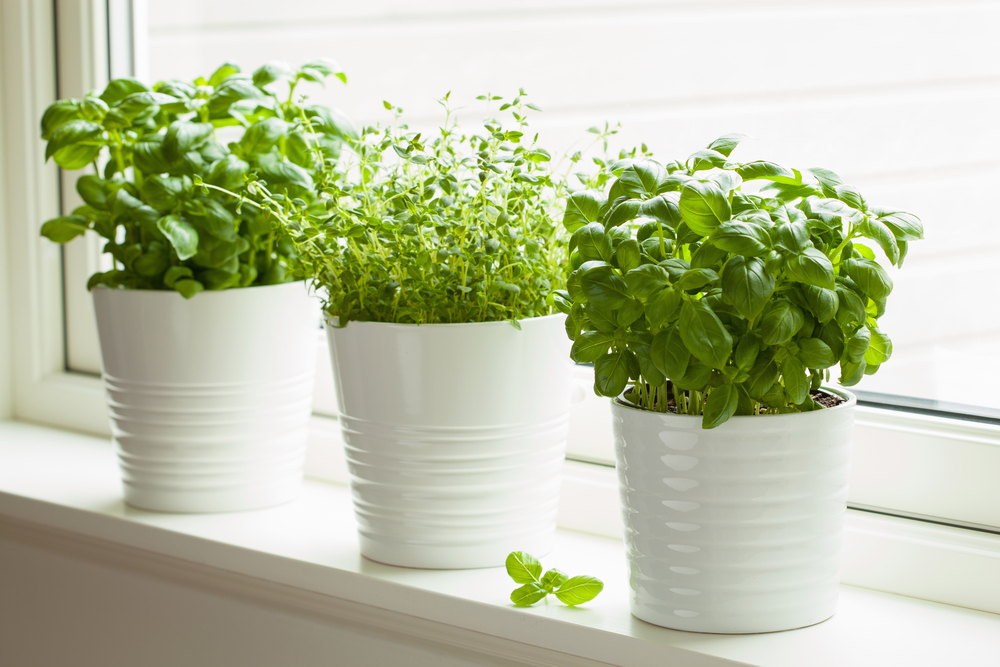
Herbs need plenty of sunlight to stay healthy. A south-facing window is usually the best spot since it gets the most consistent light during the day. East or west-facing windows can work too, but the more light the better.
If your home doesn’t get enough natural sun, you can use grow lights. They don’t take up much space and can make a big difference, especially in winter. Keep in mind that most herbs need around 12 to 16 hours of light each day.
Also, pay attention to temperature and moisture. Herbs like it around 65 to 75 degrees. Avoid placing them near drafty windows or heat vents. A little humidity helps, so kitchens often work well.
Selecting Containers and Potting Mix
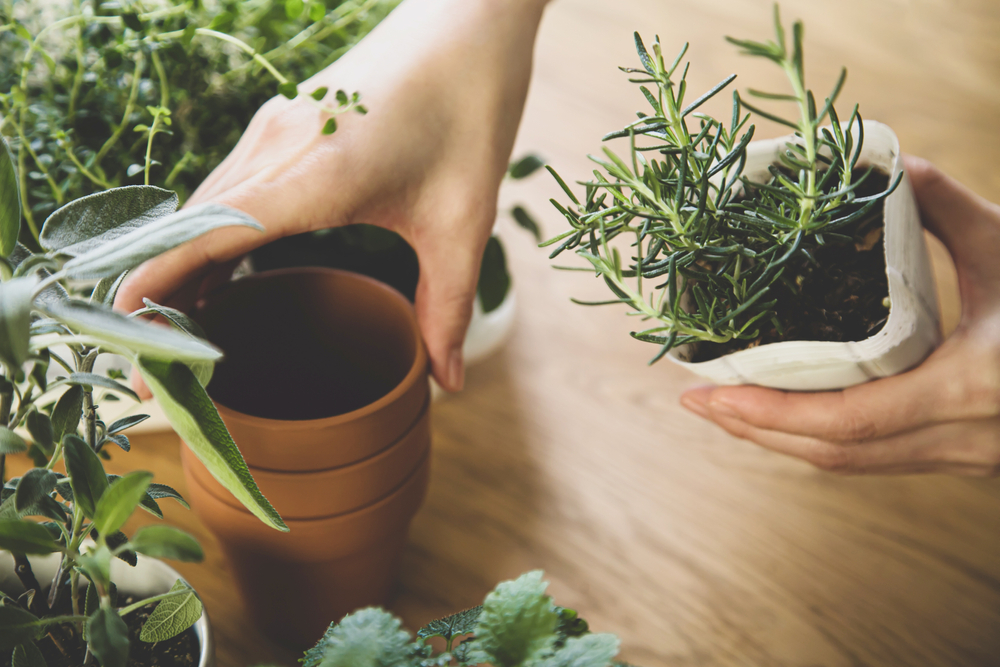
Pick pots that give the roots room to breathe. Six-inch containers work for most herbs, though mint may need more space since it tends to spread. Ceramic, plastic, and terra cotta pots are all fine as long as they have drainage holes.
When it comes to potting mix, try to follow these tips.
- Light and fluffy
- Drains well
- Made for indoor plants or containers
Drainage is really important. If water collects at the bottom, roots can rot. Always check that your containers let extra water escape easily.
Using Grow Lights for Year-Round Success
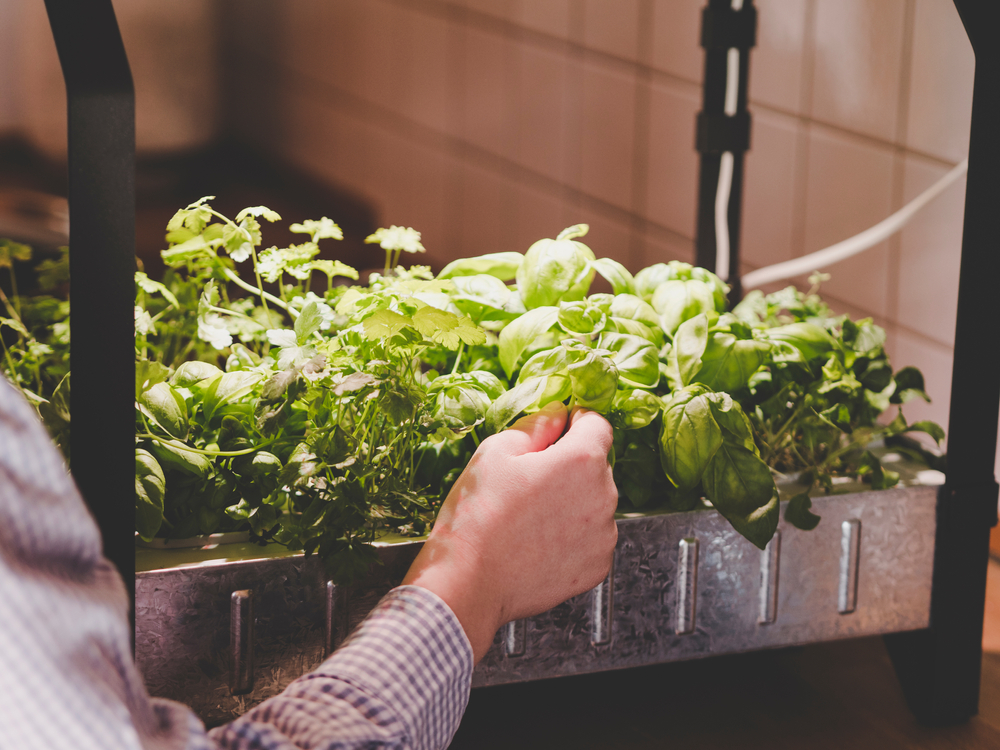
If you want herbs all year long, especially during darker months, grow lights can keep your plants going strong. They’re helpful when sunlight is limited or uneven.
Both LED and fluorescent lights work well for herbs. LEDs use less energy and don’t heat up as much, which makes them a popular choice for indoor gardens. Set your lights on a timer and adjust the height as the plants grow. Keep them a few inches above the tallest leaves to give your herbs a strong start.
Watering and Feeding Your Indoor Herbs
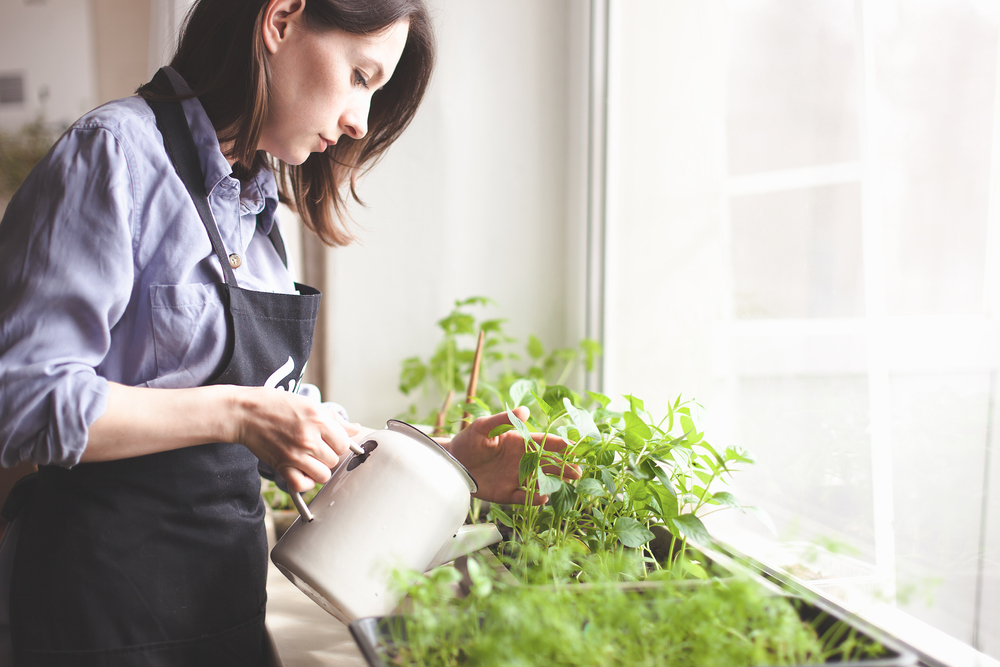
Most herbs don’t like to sit in wet soil. Water when the top inch feels dry. Basil and parsley may need water more often, while rosemary and thyme prefer it on the drier side.
Look out for signs your plant needs a change.
- Drooping or yellow leaves may mean too much water
- Dry, crispy edges often mean they’re too dry
- Mushy stems could mean root problems
Fertilizer isn’t always needed, but a light feeding every few weeks can help. Go with something gentle and don’t overdo it.
Pruning and Harvesting for Healthy Growth
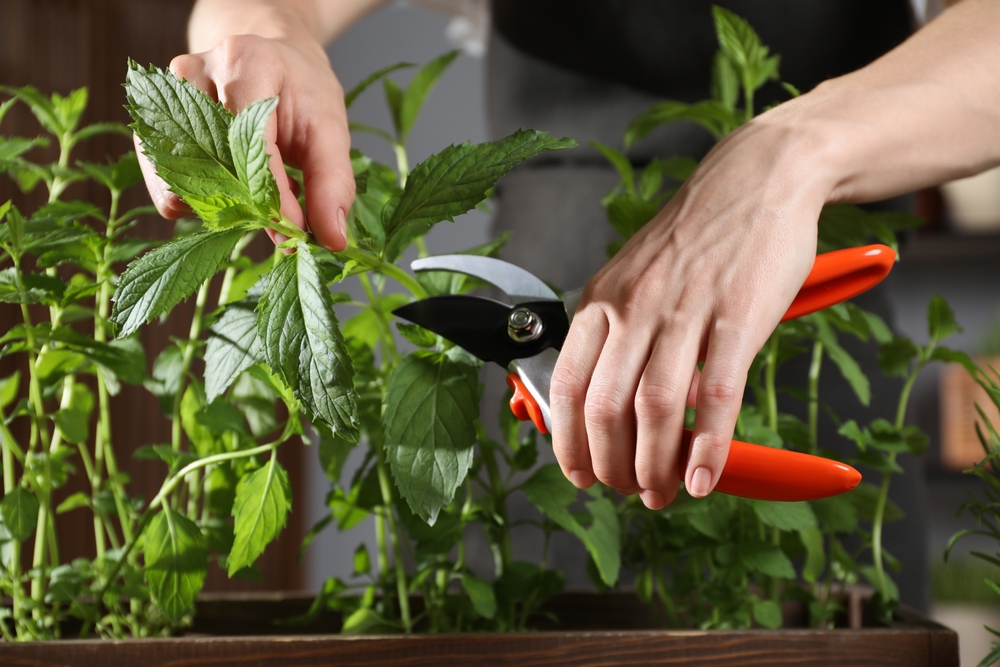
When you harvest herbs, you’re also helping them grow. Snip above a set of leaves rather than at the bottom. This encourages the plant to branch out and get bushier over time.
Regular picking also keeps herbs from flowering too early. Once they flower, the flavor can change, and the plant might slow down. Morning is usually the best time to harvest since the oils that give herbs their flavor are strongest then.
Use sharp scissors or clean hands to avoid bruising the stems, and don’t take more than a third of the plant at a time.
Dealing with Common Indoor Herb Problems

Even indoors, pests can show up. Aphids, spider mites, and fungus gnats are the usual suspects. You can rinse the leaves or use neem oil to help with bugs. Just make sure the plant dries off afterward.
Too much water can cause mold, mildew, or root rot. Good airflow and drainage help prevent that. If you notice white fuzz or a musty smell, it’s time to adjust your watering habits.
If your herbs get tall and leggy with small leaves, it usually means they’re not getting enough light. Move them closer to a window or snip them back to encourage stronger growth.
Storing and Using Your Fresh Herbs
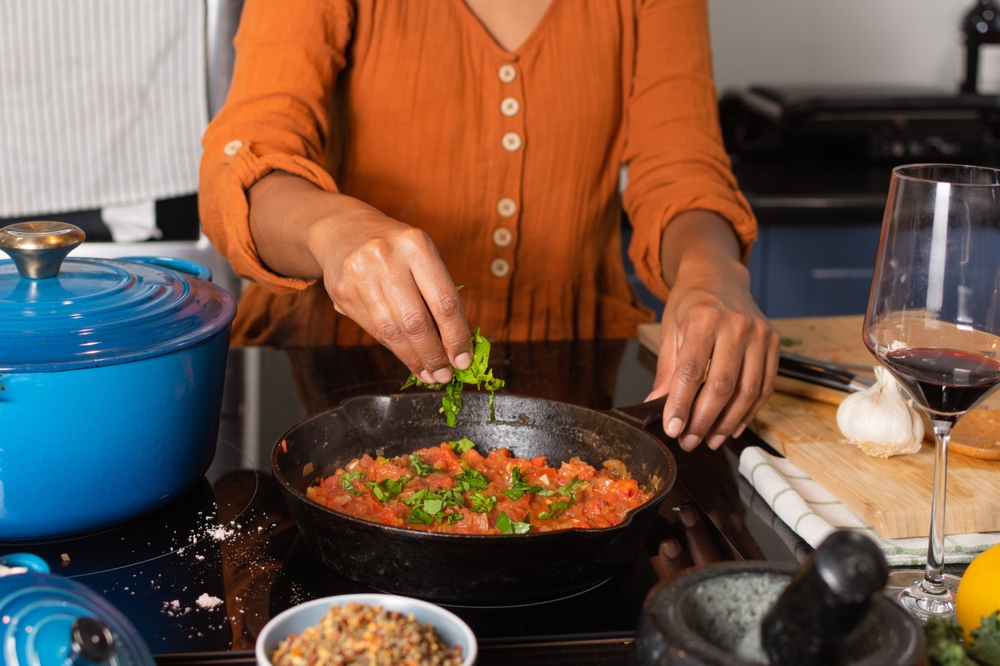
If you pick more herbs than you need, you can save them for later. Wrap them in a damp paper towel and keep them in the fridge for a few days. You can also dry or freeze them to stretch their shelf life.
Fresh herbs add flavor to meals without much effort. Toss basil in pasta, stir chives into scrambled eggs, or sprinkle mint over fruit salad.
You can also steep herbs in oil or vinegar for a few days to make your own flavored dressings and cooking oils.
Final Tips for Long-Term Indoor Herb Success
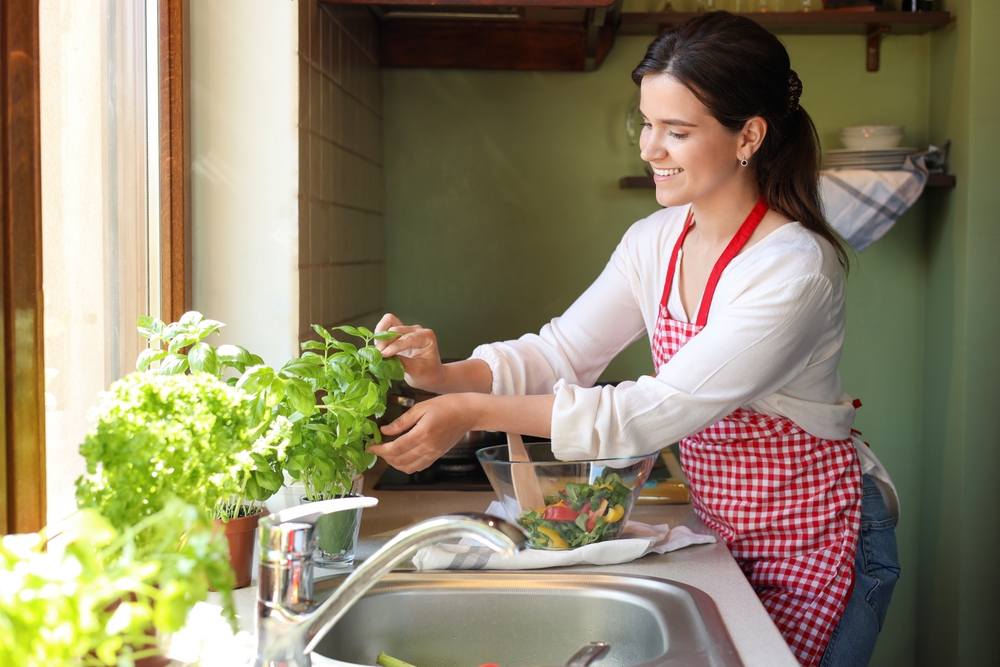
Rotate your pots now and then so all sides of the plant get equal light. This helps them grow straight and strong instead of leaning toward the window.
If a plant gets too big or starts to slow down, you can move it to a bigger pot or start over with a fresh one. Herbs don’t last forever indoors, but they’re easy to replace.
A small calendar or reminder app can help you keep track of watering, feeding, and pruning. Once you build the habit, growing herbs indoors becomes second nature.
This article originally appeared on Avocadu.
